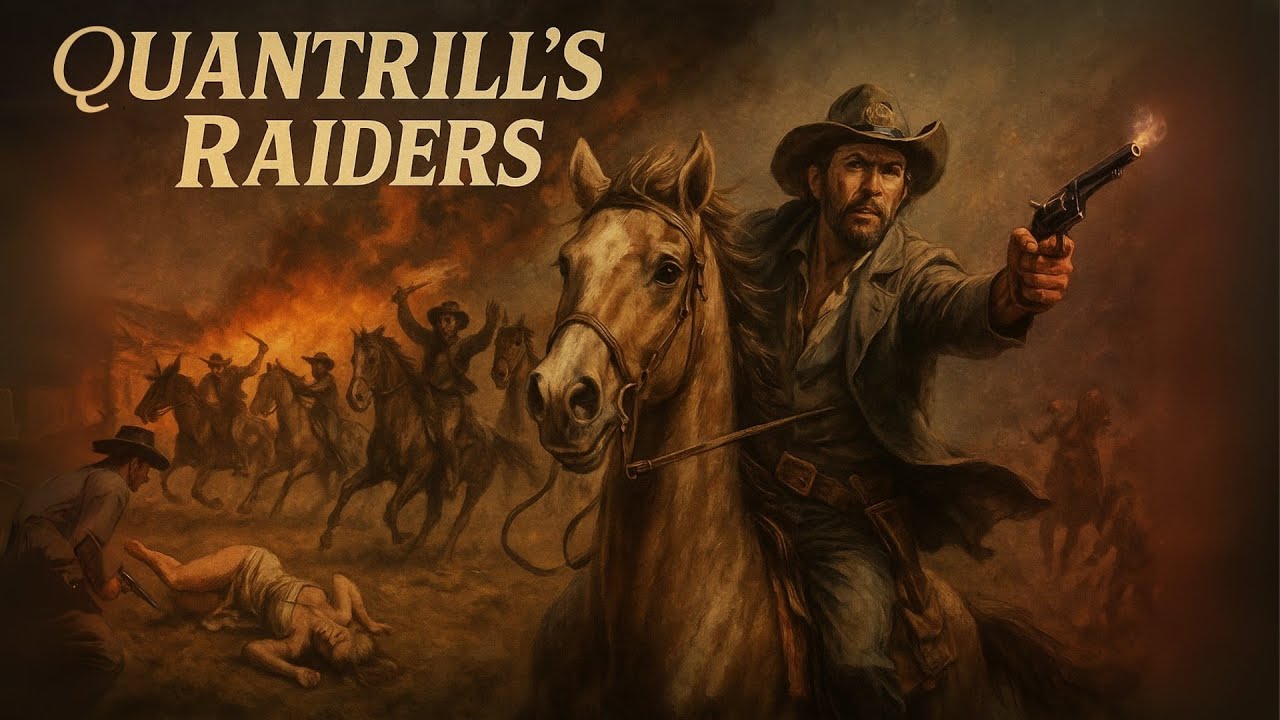Introduction
The American Civil War is often remembered for its monumental battles, renowned generals, and staggering casualties. However, a lesser-known aspect of the war involved the guerrilla warfare that raged across the border states and beyond. Bands of civilians and soldiers on both sides engaged in hit-and-run tactics, sowing chaos and instilling fear. Among these groups, Quantrill’s Raiders stood out for their effectiveness and notoriety. Led by the enigmatic William Clarke Quantrill, these Confederate guerrillas became infamous for their brutal raids and the lasting impact they had on the conflict.
The Rise of Quantrill’s Raiders
William Clarke Quantrill, born in Ohio in 1837, was a man of contradictions. He began his career as a schoolteacher but soon turned to a life of crime and, eventually, guerrilla warfare. Quantrill’s Raiders emerged in the turbulent border state of Missouri, a hotbed of divided loyalties and violent confrontations between pro-Union and pro-Confederate forces.
Quantrill’s transition from teacher to guerrilla leader was driven by the volatile political climate and personal grievances. His deep-seated animosity towards the Union was fueled by the brutal tactics employed by Union forces in Missouri, including the arrest and imprisonment of Southern sympathizers and the destruction of property. Quantrill capitalized on this resentment, recruiting men who were disillusioned with the Union’s heavy-handed measures and eager for retribution.
The Tactics and Operations of the Raiders
Quantrill’s Raiders specialized in guerrilla tactics, relying on speed, surprise, and intimate knowledge of the local terrain. Their operations included ambushes, sabotage, and hit-and-run attacks on Union troops, supply lines, and civilian targets. The Raiders were particularly adept at blending into the local population, making it difficult for Union forces to track and eliminate them.
One of the most infamous operations conducted by Quantrill’s Raiders was the Lawrence Massacre on August 21, 1863. Quantrill led approximately 450 men in a brutal raid on Lawrence, Kansas, a stronghold of anti-slavery sentiment and home to many Union supporters. The Raiders killed around 150 men and boys, looted and burned the town, and left a trail of devastation in their wake. The massacre shocked the nation and cemented Quantrill’s reputation as a ruthless guerrilla leader.
The Impact of Guerrilla Warfare on the Civil War
The guerrilla warfare waged by Quantrill’s Raiders and other similar groups had a significant impact on the Civil War. These guerrilla actions diverted Union resources and attention, forcing them to deploy troops to areas plagued by guerrilla activity rather than focusing solely on major battles. The constant threat of ambush and sabotage created an atmosphere of fear and uncertainty, undermining Union efforts to maintain control over contested regions.
Guerrilla warfare also exacerbated the already deep divisions within communities, turning neighbor against neighbor and fueling cycles of violence and retribution. In Missouri and Kansas, the lines between civilian and combatant blurred, leading to a brutal and personal form of warfare that left deep scars on the population.
The Controversial Legacy of William Clarke Quantrill
William Clarke Quantrill remains a controversial figure in American history. To some, he is seen as a courageous and cunning leader who fought valiantly for the Confederate cause. To others, he is a villain whose tactics were marked by brutality and a disregard for the rules of warfare. His legacy is further complicated by the fact that many of his followers went on to lead notorious lives of their own.
Among the notable members of Quantrill’s Raiders were Frank and Jesse James, who would become infamous outlaws in the post-war period. Their experiences in guerrilla warfare under Quantrill undoubtedly shaped their later criminal careers, marked by bank and train robberies and a continued defiance of authority.
Quantrill himself did not survive the war. He was severely wounded in a skirmish in Kentucky in 1865 and died from his injuries shortly thereafter. Despite his relatively short life, his influence extended far beyond his death, shaping both the course of the Civil War and the mythos of the American outlaw.
The Broader Context of Guerrilla Warfare in the Civil War
Quantrill’s Raiders were not the only group engaging in guerrilla warfare during the Civil War. Both Union and Confederate forces employed guerrilla tactics, often with significant local support. In the South, groups like John S. Mosby’s Rangers conducted similar operations, targeting Union supply lines and communication networks in Virginia.
The Union also had its share of guerrilla fighters, such as the “Red Legs” in Kansas, who engaged in counter-guerrilla operations and were known for their ruthless tactics against Confederate sympathizers. These groups operated in a shadowy world where the distinction between soldier and outlaw was often blurred, and where conventional military rules did not always apply.
The Enduring Legacy of Civil War Guerrillas
The legacy of Civil War guerrillas like Quantrill’s Raiders is still felt today. Their tactics and impact on the war highlight the complexities and brutal realities of irregular warfare. The guerrilla campaigns of the Civil War presaged similar conflicts in the 20th and 21st centuries, where unconventional warfare and insurgency tactics would become common.
In popular culture, figures like Quantrill and his Raiders have been romanticized and vilified, reflecting the enduring fascination with the outlaw archetype in American history. Films, books, and television series have explored the exploits of these guerrilla fighters, often blurring the line between historical fact and legend.
Conclusion
The story of Quantrill’s Raiders and the guerrilla war they waged against the Union is a vital, if often overlooked, aspect of the Civil War. It reveals the darker, more chaotic side of the conflict, where bands of fighters operated outside the conventional boundaries of warfare, leaving a trail of destruction and shaping the course of American history. William Clarke Quantrill’s legacy as a guerrilla leader is a testament to the complexity of the Civil War and the enduring impact of irregular warfare on the American psyche.
